Do I Need To Prime Bathroom Walls Before Painting
This post is sponsored past Rust-Oleum, whose products make almost all of my DIY projects look better!
Do you ever inquire yourself, exercise I need to prime before paining this or is primer really necessary? I know I practice! Dorsum in law school I spent many hours painting a laminate bookshelf for my apartment, only to have the paint skin correct off because I didn't prime number it first. I'm a much savvier DIYer now than I was back and then, but I notwithstanding find myself questioning when I need to use primer for projects around my house.
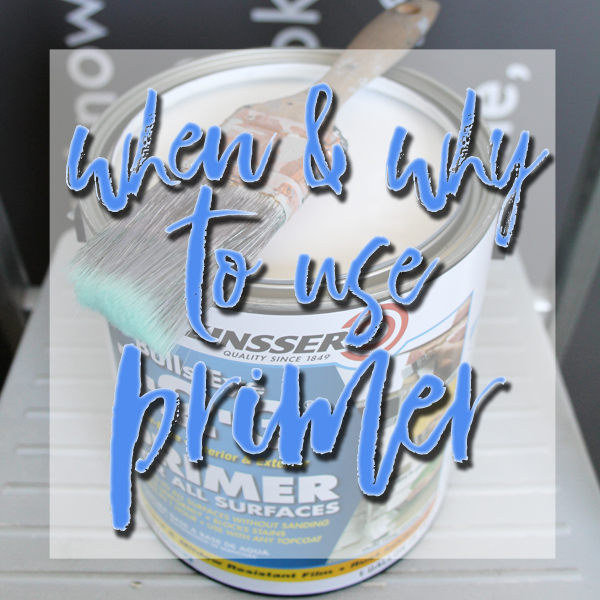
Take our contempo bathroom mess for example…
A few days earlier Christmas, I went upstairs to the guest room to wrap all of the boys Christmas presents. I had a cup of hot chocolate, turned a holiday motion picture on the Tv set, and got out all the paper and bows. I was ready for a relaxing, festive afternoon.
But things went wrong when I walked into the attached guest bathroom and felt a baste hit my head. I looked up, and saw some other baste of brownish h2o forming on the door frame to a higher place my head, just waiting to fall. I grabbed out a pace ladder and felt the wall above the door – it felt dry. I felt all effectually on the ceiling – if felt dry out, too. Just drops kept falling from the heart of the door frame. For an hour or so, and so they stopped.
I idea about what was above me on the 3rd flooring, and realized the master bath shower was aligned pretty closely with this mysterious leak. I was able to go a plumber out that afternoon, only after more an 60 minutes, he couldn't recreate the leak. No matter how much h2o he ran in the shower – and down every other bleed in the master bathroom – no more than water dripped from the door frame below.
The plumber left and about an hour later… Drip. Drip. Drip.
I called the plumber back and he returned the next morn. He told me the simply style he was going to be able to find the leak was to cutting a hole in the bathroom ceiling and look for the source. I gave him the go ahead, and he started with a small pigsty on the ceiling just above the door. As he traced the water, the pigsty kept getting bigger, and bigger, and BIGGER, until it well-nigh reached the other side of the bathroom.
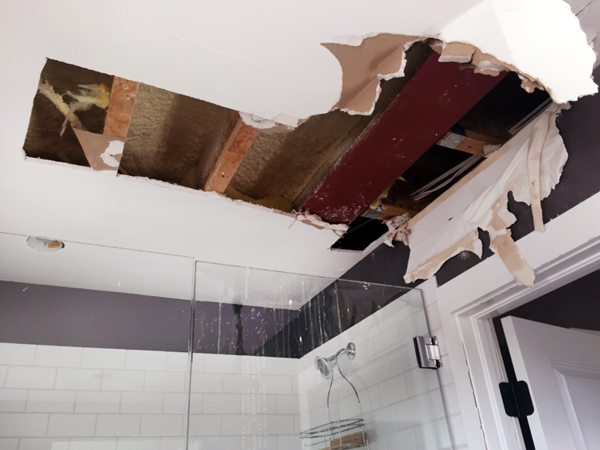
In the stop, we determined that the water was not coming from the bathroom above. It was instead coming from a leak in the deck that wraps effectually our master bedroom and bathroom. The water was so running along the acme of some steel beams before finally finding the path of least resistance through the doorway about 5 anxiety away from the original source of the water.
So on Christmas Eve, Scott and my dad started pulling up the deck boards one past one in search of the leak. Santa was smiling on u.s., because afterwards removing a relatively small number of boards, they found a tiny puncture in the deck lining where a screw had popped through.
Once the hole in the deck was patched, repairing the pigsty in the bath ceiling took a backseat. We celebrated Christmas and then our son'south birthday, and and so got back to our regular routine in the new year. I don't go into the guest room all that frequently, and when I exercise, I tried non to look up at the hole, and I ignored the slightly musty olfactory property.
Finally I hired a drywall professional to come and repair the giant hole in the ceiling.
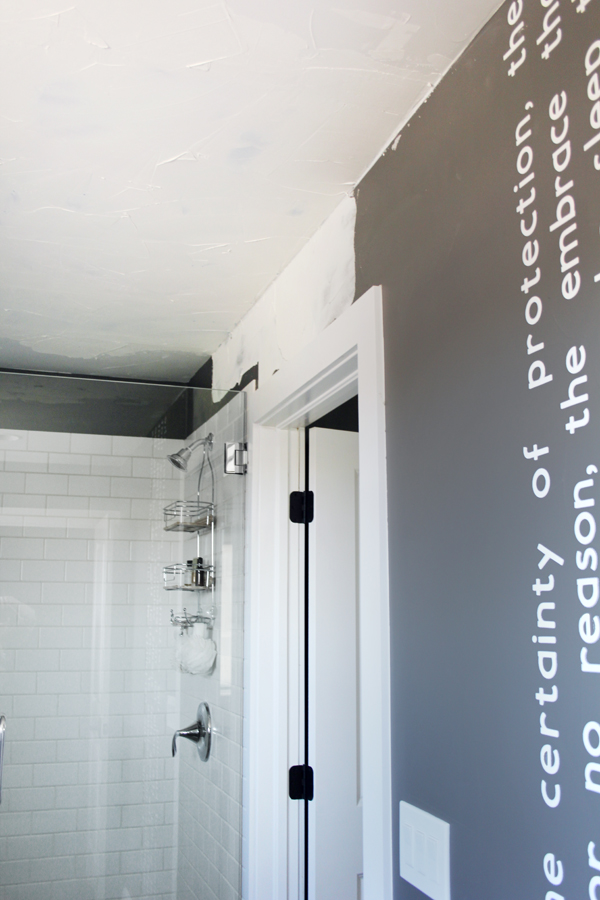
The new drywall was then covered in a thick layer of drywall joint compound to match the manus-troweled texture throughout our house.
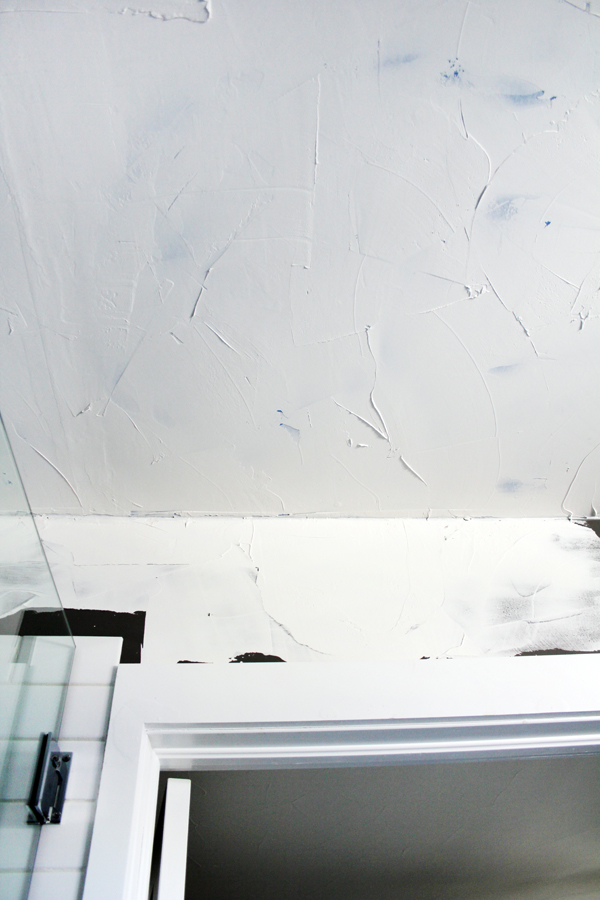
As soon every bit the drywall repair work was finished, I pulled out the matching paint colors from my storage room, eager to make the bathroom pretty again. But then I started to question whether I could paint directly onto the newly repaired surface, or if I needed to prime number first.
I did some research and found out that primer is necessary to seal and set new drywall and articulation compound painting. Unprimed drywall and joint compound will soak up multiple coats of pigment, requiring a lot more coats and frequently resulting in uneven color-coverage. And to answer the first question you're probably asking, no, it is not advisable to use a paint-and-primer-in-one on new drywall.
I've been doing DIY projects for many years, just I still notice myself oft wondering when I should use primer. If yous've always asked the same question, I've put together a quick resource at the end of this mail service to help you know when and why to use primer.
I asked my friends over at Rust-Oleum to recommend the correct type of primer to use on new drywall and drywall compound in my bathroom, and they recommended Zinsser Bull'south Eye ane-2-three.
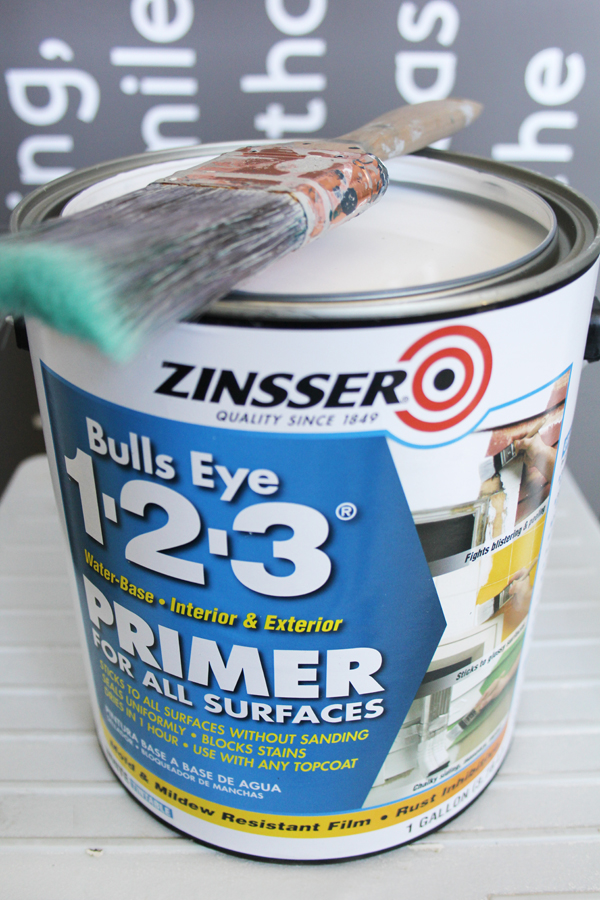
Ok, so now I knew I needed to prime earlier painting my drywall repair, but I yet wasn't set to dip my pigment brush in and go started but yet.
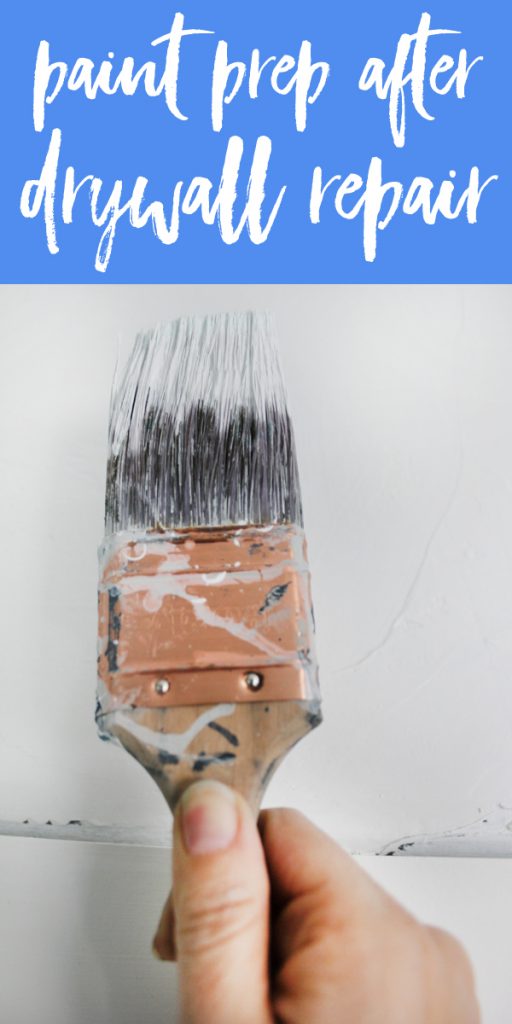
Earlier priming, it's important to wipe downwardly the wall because if there's a lot of loose dust on the wall {and drywall is a dusty business}, it can prevent even the primer from sticking appropriately. I used a slightly clammy rag to wipe down the repaired surfaces, and and then allowed it time to totally dry out before starting to use the primer.
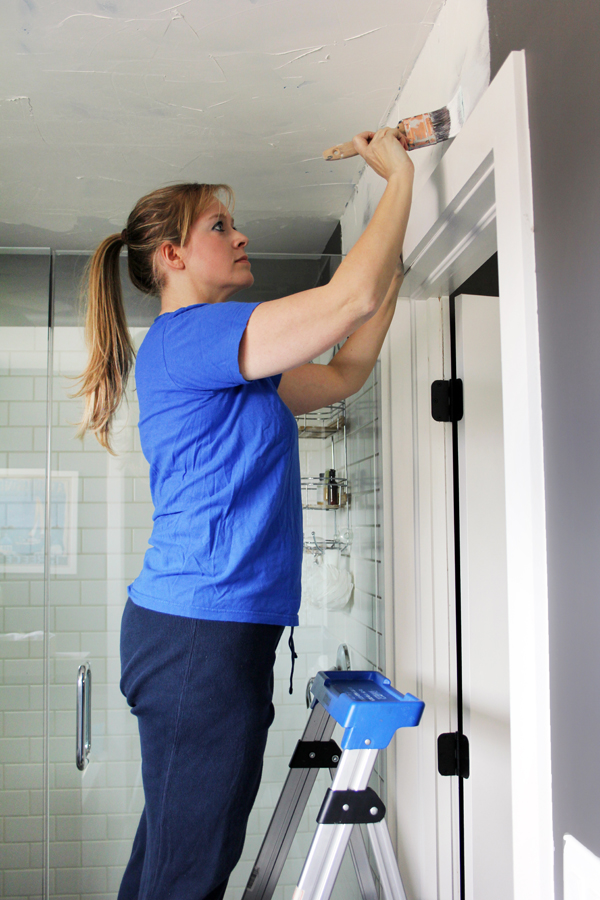
I used a brush to prime the small expanse of wall above the door and shower, and then used a roller to prime the ceiling.
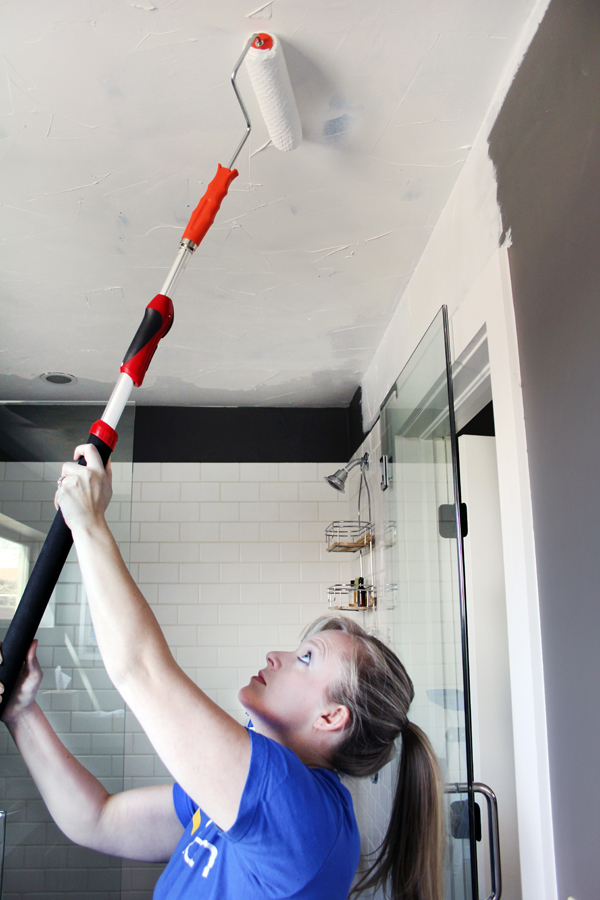
Nosotros were very fortunate that nosotros didn't need to supercede the door frame. The water damage was limited to a tiny fleck of swelling in one spot and a just a bit of h2o staining. I applied a coat of primer to block these stains earlier touching upward the paint on the door frame.
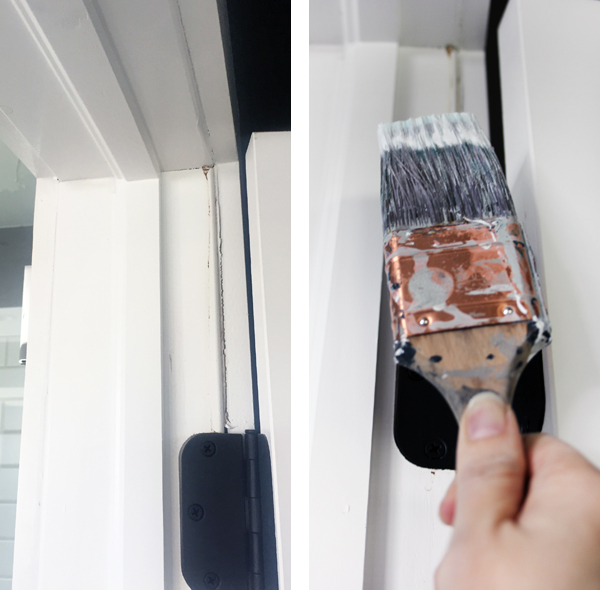
Well-nigh no DIY project gets done effectually here without at least i little helper. Cooper is an practiced with a dry paint brush, and insisted that his contributions needed to exist documented for this post!
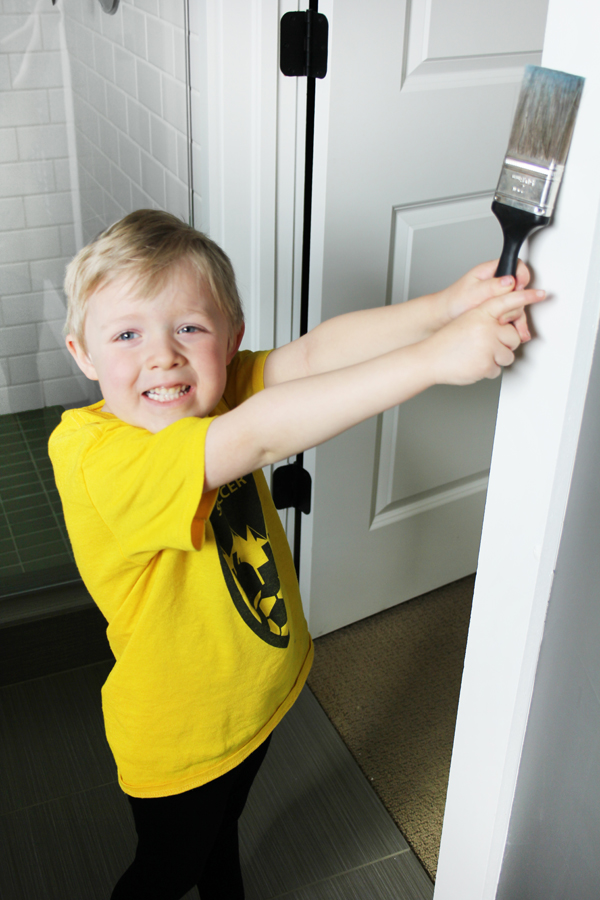
After allowing the primer to dry, I was ready to repaint. I once more used a roller with an extension rod to paint the ceiling, which fabricated it much faster and easier than climbing on and off my pace ladder.
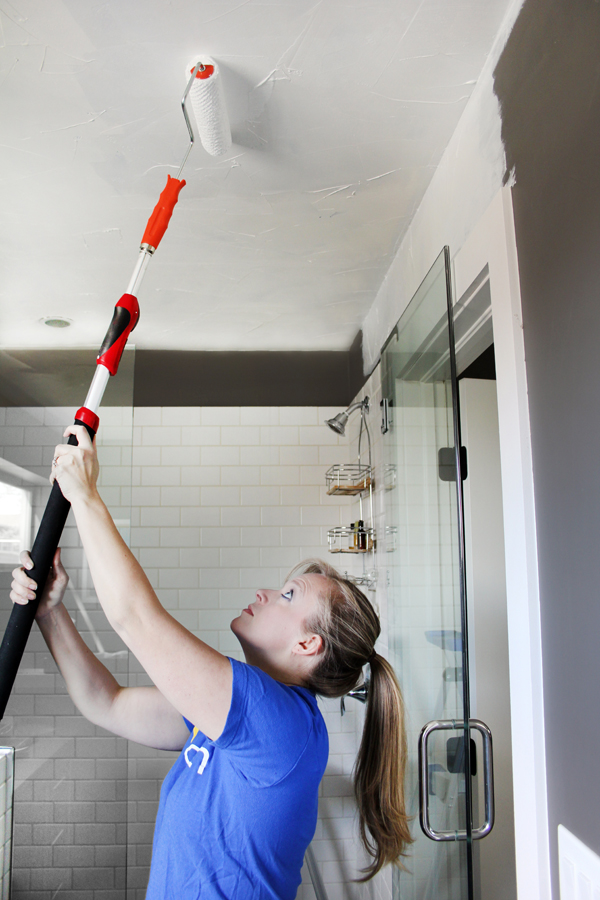
In one case the ceiling paint was dry out, I used painters tape to prep the department of wall before touching up the charcoal gray paint. Some people take a steady plenty hand to cut-in without tape, simply I e'er spend the extra few minutes to tape before painting in order to get a nice, well-baked paint line.
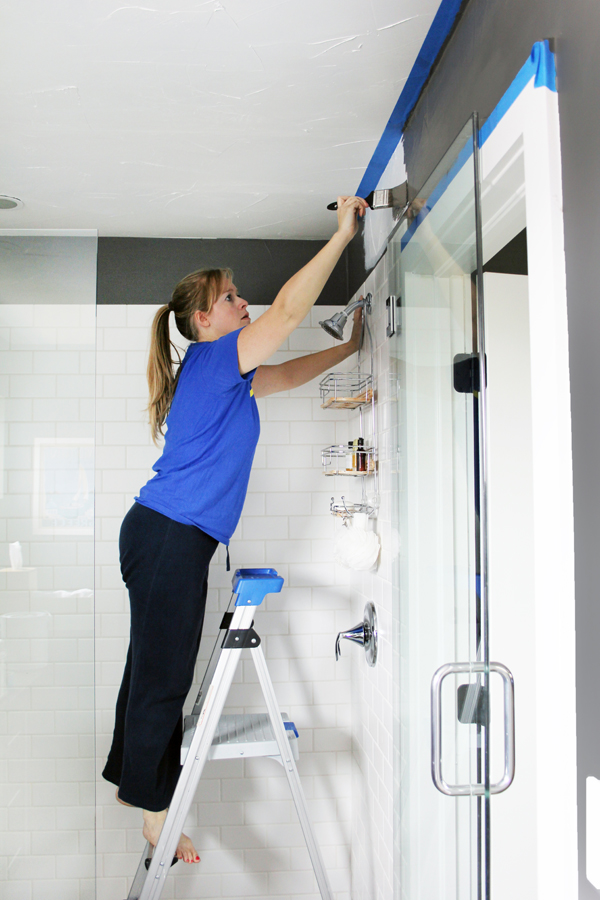
I removed the tape equally soon equally I finished my second coat of the gray paint. Removing the record while the pigment is nonetheless wet is always best, because one time the paint dries, y'all run the take chances that some may pare off with the record. Always peel painters tape off at a 45 degree angle for the best result.
And simply like that … our bathroom is as skilful every bit new. I much prefer when the quote on the wall is the focal point of the bathroom, rather than a behemothic hole in the ceiling!
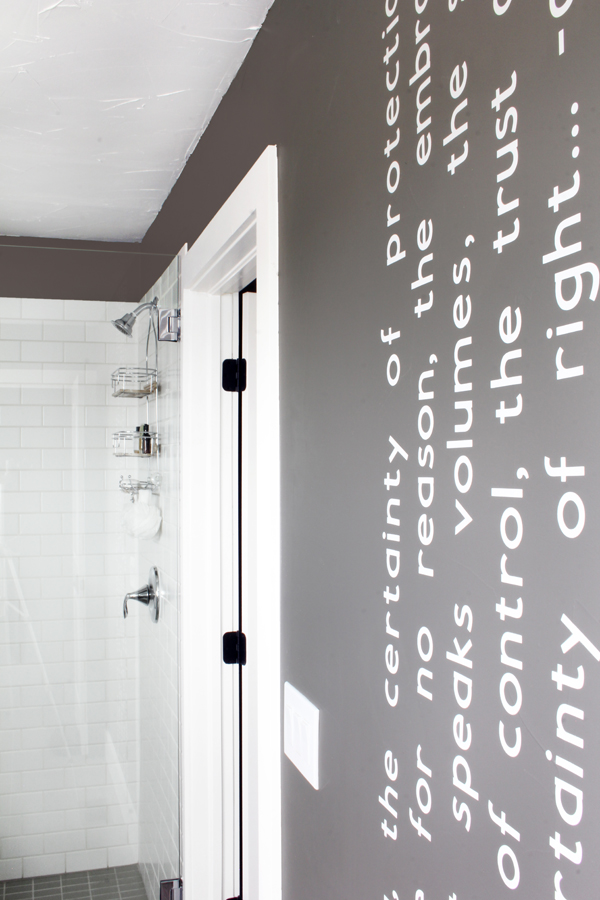
I'm so glad to no longer meet the torn apart ceiling reflected back in the bathroom mirror, especially since the mirror is visible from the guest room. Our beautifully repaired space is much more than welcoming for guests.
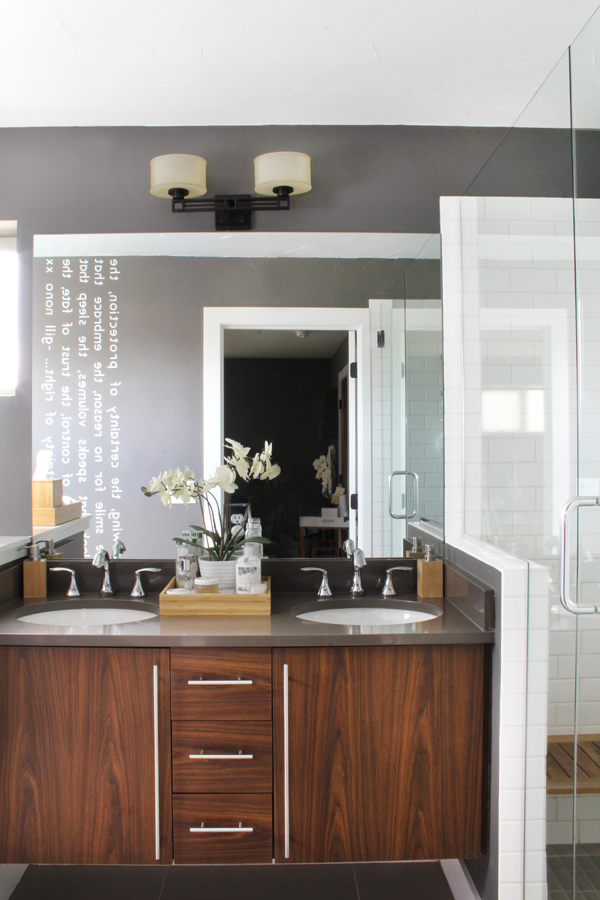
I've always found this bathroom to be a calming and relaxing infinite, and I'm so relieved that it's finally been returned to its spa-like state. Future guests, get-go making your reservations at present. 😉
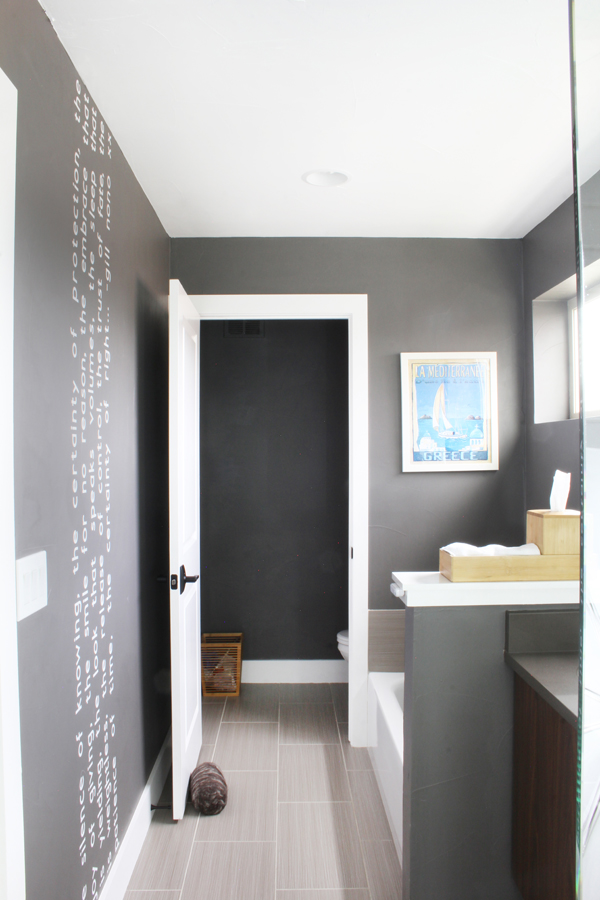
Ok, then now that I've learned the importance of priming drywall repair before painting, let'southward conversation about other projects that call for primer!
Knowing when to use primer ofttimes comes down to understanding why it's necessary. Primers tin make your pigment project easier and provide ameliorate finished results. Primers make painting easier by promoting topcoat adhesion, providing improve coverage, blocking stains, blocking odors, and more.
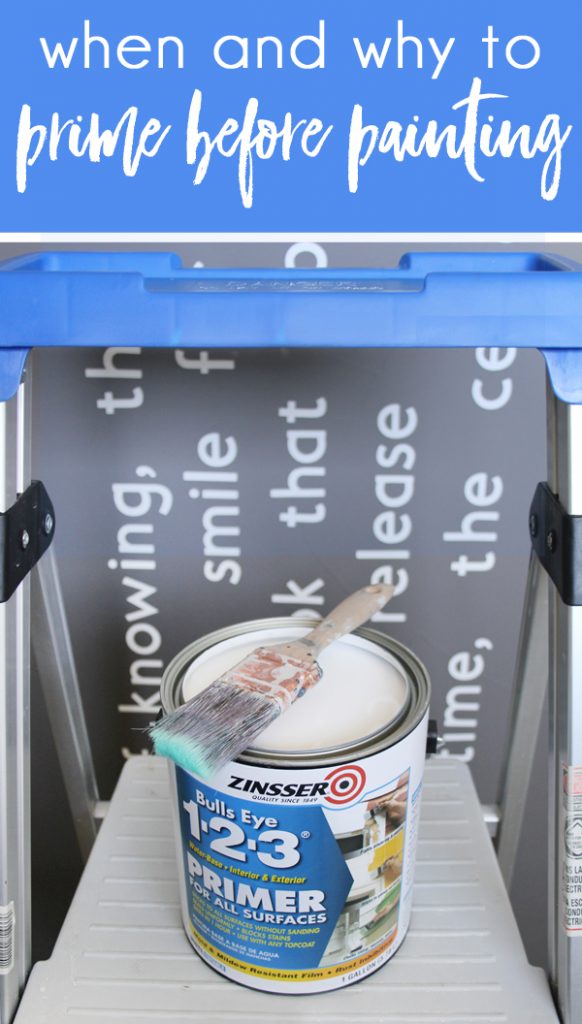
In a recent interview, I was asked about my favorite fashion to spend $50, and without hesitation I responded, "Paint!" Whether information technology's a gallon of paint for your walls, or a can of spray paint for just about anything else, paint is an affordable way to brand a big impact on a pocket-sized budget.
I'm always surprised when I talk to people who are intimated to paint, considering I don't hesitate to paint anything and everything. But I remember it comes downward to the fact that many of us have had bad painting experiences at one time or another, and by and large, that comes down to improper grooming and skipping important steps, like priming!
Priming before painting tin feel like an extra pace, simply taking the time to do the project right the first time will eliminate many DIY mishaps!Using a primer every bit the starting point will as well assistance avoid common painting bug that make projects take longer and add to the overall frustration of painting such as:
- applying too much paint that so runs and sags
- applying paint that starts to peel when you castor dorsum over it
- having to put on three-four coats to cover stains
- being able to tell you put on 3-4 coats with a thick, uneven finish
- finished await is not the true colour you were going for
Starting with primer also extends the longevity, washability, and durability of your final painted surface!
So what about using a "pigment with primer in 1" production? These work best if you are painting the walls the same color, keeping the same paint sheen, and if the walls and existing paint are in practiced condition. But in near other situations, starting with primer will give you better results the outset time. While paint and primers in one can seem to save you time, skipping the pace of priming tin pb to many DIY mishaps.
Here's a listing from the experts at Rust-Oleum outlining the common DIY situations that call for primer:
- Use primer to seal porous surfaces such equally:
- architect's flat paint, blank drywall, and spackled areas
- stucco, concrete and masonry
- raw wood
- weathered aluminum
- Permanently block out odors and stains, preventing bleed through the topcoat:
- Tannin bleed, food and beverage stains
- Knots and sap streaks
- Graffiti, ink and crayon
- Hide night colors and surfaces:
- Decorative colors and faux finishes
- Panelling, wallcovering and borders
- Stained cabinets
- Create a layer to which paint will adhere, such as sleeky, hard-to-pigment surfaces, without sanding:
- Finished woodwork, shelving
- Old glossy paints, varnished trim
- Laminate furniture
- Drinking glass, ceramic tile, decorative tile, formica
- Vinyl siding, shutters
- PVC pipage, finished metals
And with the returning popularity of wallpaper, as well continue in mind that you lot should e'er prime wallboard before hanging wallpaper. When using traditional wallpaper with glue, the primer volition seal the wallboard and articulation chemical compound so that the wallpaper glue doesn't soak in and dry out. For temporary, removable wallpapers, you want a fresh make clean surface to utilise the paper to, but one to which the adhesive won't adhere too strongly. For wallpaper applications, utilize a specific wallpaper primer.
Consult Rust-Oluem'south complete Guide to Primers and Sealers when determining which blazon of primer is correct for your next DIY projection. I have information technology bookmarked as my go-to resource!
Here are some related posts from the web log that y'all might find helpful:
- Best Tips & Tricks for Painting Any Infinite
- Spray Paint Organization
- Utility Room Paint Supply Storage & Arrangement
- Tips for Proper Paint Storage, Recycling, and Disposal
- How to Install Temporary, Removable Wallpaper

Source: https://www.blueistyleblog.com/when-to-use-primer-before-painting/
Posted by: ammonsinho1956.blogspot.com


0 Response to "Do I Need To Prime Bathroom Walls Before Painting"
Post a Comment